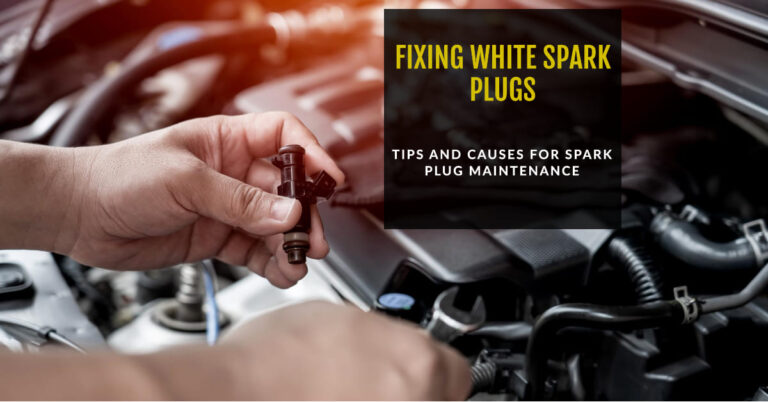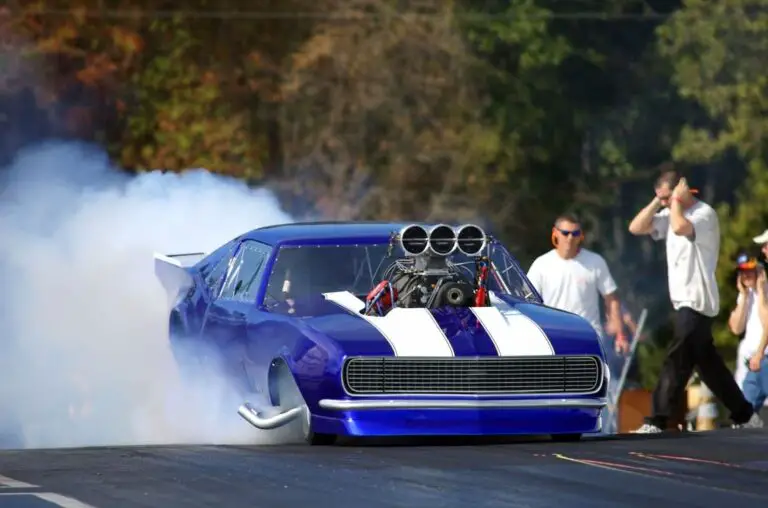High Oil Pressure – What’s Causing It and How To Fix It?

Driving down the open road, wind in your hair, not a care in the world. You glance down at the dash and BAM – an oil pressure warning light glares angry red back at you. Uh oh, spaghetti-o.
What in the Sam Hill is going on under that hood? Your heart drops into your stomach. Will your engine blow any second? Have no fear, gearhead, this handy-dandy guide’s here. We’ll get to the bottom of that pressurized oil predicament and have you rolling again in no time flat.
So what causes high oil pressure? The short answer – too much resistance in the oily parts. The nitty-gritty details are coming right up.
We’ll explore:
- Common causes of too much oil pressure
- Symptoms to watch out for
- How to diagnose the issue
- Temporary fixes and treatments
- Repairs and maintenance to properly resolve it
So buckle up and grab a slushie. Diagnosing engine issues can make anyone turn chicken, but we’ll figure this clucker out together.
Table of Contents
Why Does High Oil Pressure Happen?
First thing’s first – what is oil pressure anyway? Well, your engine obviously needs slick oil to keep everything running smooth. The oil pump pressurizes and circulates this crude nectar throughout the engine.
The pump forces the oil through filters, passages and into critical components like bearings, valves and pistons. This constant lubrication keeps friction and wear to a minimum.
So what causes too much pressure? Basically resistance. Anything restricting the oil’s flow makes the pump work harder to push it through. The harder it works, the higher the pressure reading.
Think of it like pinching a garden hose – the water pressure skyrockets, right? Same idea.
This resistance prevents adequate lubrication and can lead to serious damage if left untreated. No bueno.
What Are the Usual Suspects?
Like a detective eying shady characters, we gotta question every possibility:
Thick, Sludgy Oil
Remember your last oil change? No? Yikes. Old oil can thicken and clog up the system over time. This sludge narrows paths and increases resistance for the pump.
Lesson: Don’t skip scheduled oil changes or exceed recommended intervals between services. Stick to the schedule in your owner’s manual.
Faulty Oil Pump
These lil’ pumps can wear out or malfunction. Maybe it’s pumping too much volume through restricted flow. Maybe the pressure relief valve is busted.
In any case, an overactive pump can drive pressure sky high. Replacing it usually does the trick.
Clogged Pickup Tube
The pickup tube snags oil from the pan and feeds it to the pump. But sludge buildup in the pan can block the tube’s screen. Less incoming flow equals more resistance.
Excess Idling
Letting your ride idle for long stretches can be problematic. The oil doesn’t get hot enough to circulate freely and can thicken up. Cold starts are especially rough on oil viscosity.
Wrong Oil Weight
Sometimes using heavier oil than the manual recommends creates too much resistance. Always opt for the correct weight to keep flow…well, flowing.
Of course, other issues like failing bearings or poor engine tolerances can also impede circulation. But the items above are some of the most common culprits.
Detecting the Issue: Symptoms & Diagnosis
How do you know if oil pressure is problematic? Let’s review some telltale signs:
- The oil pressure warning light appears on the dash
- The engine makes concerning noises – knocking, tapping or rattling
- Oil leaks coming from gaskets and seals
- Performance problems like loss of power
- Excessive oil consumption (burning or leaking)
- Overheating problems
When you notice these symptoms, it’s vital to determine if oil pressure is truly abnormal. Here’s how to check:
Consult Your Gauge
Many cars have an oil pressure gauge along with the warning light. Pay attention to where readings fall on the gauge and if it flutters at idle. Compare numbers to your manual’s acceptable range.
Install a Mechanical Gauge
For a more precise diagnosis, install an aftermarket mechanical gauge to directly measure oil pressure. Snap-on and other brands make adapters that fit most vehicles.
Perform a Pressure Test
This involves attaching a special tester gauge and measuring PSI at idle, 2,000 RPM, etc. Results pinpoint if pressure is outside normal parameters.
Check Bearing and Valve Train Noise
Excessively noisy lifters, rockers, bearings or cam can indicate insufficient lubrication and pressure. Try adding thicker oil as a temporary fix.
Diagnosing the problem accurately is step one. Now let’s talk solutions.
Quick Fixes & Temporary Treatments
Dealing with high oil pressure? Consider these quick fixes to potentially buy yourself some time:
- Change the oil and filter – Old, thick oil is a prime suspect. Drain it and add fresh oil of the specified weight.
- Use heavier viscosity oil – Thicker oil might help restrict flow and reduce pressure. But don’t go against manufacturer recommendations.
- Add zinc additive – Zinc dialkyldithiophosphate (ZDDP) fortifies worn bearings and can quiet lifters and valvetrain noise.
- Install an external oil filter – Adding a high-flow, auxiliary filter gives oil another path, decreasing resistance in the engine.
- Replace the pump’s pressure relief valve – If the relief valve isn’t opening properly, pressure can’t bleed off. Swapping in a new one may help.
Note these are temporary measures, not permanent solutions. But they might get you by in a pinch.
Repairs and Maintenance to Properly Fix It
To fully resolve excess oil pressure, you’ll likely need one or more of these repairs:
Flush Contaminants from the Oil System
Over time, blow-by gases, fuel dilution, and worn metal particles contaminate your oil. Flushing kits use solvents to clean out gunky deposits.
Replace the Oil Pump
If diagnosis confirms oil pump issues, replacing it is the surefire cure. OEM or performance pumps are available. Proper installation is critical.
Repair or Replace Bearings
Excess clearances in rod or main bearings raises flow between bearing and journal. New standard or performance bearings can restore tolerances.
Swap Cam Bearings
Worn, loose cam bearings also raise oil flow which gets the pump churning harder. Fresh cam bearings or a camshaft overhaul resolves this.
Fix Excessive Piston-to-Wall Clearance
Too much space between pistons and cylinder walls also leaks oil flow, eventually increasing pressure. Overhauling worn cylinders is the solution.
Unclog the Pickup Tube
Remove and clean out the pickup tube if gunked up with debris. Prevent future buildup by addressing blow-by with improved piston rings or valve guide seals.
Repair Oil Leaks
External leaks indicate possible internal leaks also restricting flow. Fix leaky gaskets, seals, and o-rings throughout the engine to restore proper oil circulation.
Adjust the Oil Pump Pickup Depth
Incorrect pickup tube depth in the oil pan causes pump cavitation and pressure spikes. Set to proper depth using provided adjustment shims.
Proper repairs go beyond just addressing the oil. Diagnosing and fixing the root internal issues provides permanent relief.
Maintaining Normal Oil Pressure
Prevention is the best medicine when dodging high oil pressure. Regular maintenance is key:
- Change oil and filters at scheduled intervals
- Use the manufacturer recommended oil viscosity
- Watch oil level and top off when needed
- Clean the pickup screen when changing oil
- Flush contaminated oil at higher mileages
- Don’t let the engine idle excessively
- Fix any external or internal leaks promptly
- Listen for bearing, valvetrain or pump noises
Monitoring gauges, listening for odd sounds, and fixing problems early keeps oil flowing freely and pressure under control.
Wrapping Up
Dealing with any major engine issue makes anxiety rev higher than the tachometer’s red line.
But while high oil pressure might seem like a ticking time bomb, a little detective work and TLC gets your ride back on the road.
By pinpointing the probable cause, applying quick fixes, and performing proper repairs, you can silence that oil pressure alarm for good. No more distracting dashboard lights – just clear cruising ahead.
Here’s to many more miles of carefree driving down the highway, wind blowing free. And remember – don’t sweat the small stuff under the hood. Not when you’ve got this handy guide riding shotgun!







